A city we have been exploring for a year....
Faro, the largest city in the Algarve region of southern Portugal, holds for me a delicate balance between the dream of becoming a vibrant, colorful, and modern capital of the region and the reality that seems to somehow suppress these aspirations. Perhaps it's because I occasionally find myself comparing Algarve cities to places I know well in Andalusia. Despite certain similarities, it's completely nonsensical to equate Algarve with Andalusia, Faro with Seville or Malaga, or the Portuguese with the Spaniards (in terms of culture or customs). I'll delve into this comparison someday, exploring these regions and their day-to-day living experiences. There's more to discover beyond just the apparent resemblances.

I've read that Faro has an almost folkloric atmosphere, where fado music echoes through the narrow streets and local fishermen invite you to enjoy local dishes in cozy restaurants...
🤔 Somehow we were not lucky enough to experience such attractions...
On other blogs, I've come across opinions that the city is overhyped, tacky, and dull because there's no beach nearby (you have to drive to get there). They suggest steering clear of it as it's not worth the time and that there are far more interesting places to explore... And they're right, there certainly are plenty of other fascinating destinations out there! ... BUT...
We lived in Faro for a year, and I wouldn't be myself if I hadn't explored every nook and cranny during that time ...

The history of Faro
Faro boasts a long history that dates back to the 4th century BC when it flourished under its initial name, Ossonoba, during Phoenician colonization. Over the centuries, it passed through the hands of the Romans, Visigoths, and Moors. Following Portugal's independence in 1143, the city became part of the kingdom. After its conquest by King Afonso III in 1249, it adopted the name Santa Maria de Faaron. In the subsequent centuries, under the name we recognize today - Faro, it prospered as a thriving city, thanks to its strategic location, secure harbor, and trade in salt and agricultural products from Algarve. During the Age of Discovery, Faro emerged as a pivotal trading center in the south.

In the 14th century, the Jewish community in Faro began to play a significant role. One of its notable figures was the printer Samuel Gacon, who in 1487 published the Pentateuch in Hebrew, marking the first printed work in Portugal! The Jewish community in Faro has always been a distinctive element of this city and held considerable importance nationwide, serving as a hub of services for many craftsmen and entrepreneurs.
In the 15th century, the prosperity of the Jewish community in Faro was disrupted by an edict issued by King Manuel I in December 1496. This edict ordered the expulsion of non-converted individuals from Judaism to Catholicism from Portugal. As a result, on the site of the former Jewish quarter, Vila Adentro, the Monastery of Our Lady of the Assumption was constructed. In 1499, the king implemented significant urban changes in the city by erecting new structures such as a hospital, the Church of the Holy Spirit (Igreja da Misericórdia), a customs chamber, and a butcher's shop.
In 1540 Faro was granted city status, and in 1577 it became the location of the Bishopric of the Algarve.
In 1596, the city suffered severe devastation during an invasion and fire led by the English forces of the Earl of Essex. This event resulted in damages to the city's walls, churches, and significant material losses.

However, the day of total Armageddon came on November 1, 1755, when a historic earthquake struck Lisbon, the entire coastline of Portugal, and parts of Spain. As a result, Faro irretrievably lost a significant part of its cultural heritage. Following this tragic event, numerous churches, monasteries, landmarks, beautiful estates, and city fortifications were nowhere to be found. This event profoundly impacted many aspects of life in the city and its surroundings. Right after the earthquake subsided, a powerful tsunami struck the coast...
I recommend a documentary on YT about this event 👆🏻👁

Certainly, the cataclysm undoubtedly impacted how the city appears today. In the city center, there's a sense of architectural chaos, and additionally, many areas remain considerably neglected...
What's worth seeing in Faro
Faro is home to the largest airport in the Algarve region. However, unlike other tourist destinations in the southern region, the city center is not too crowded in summer. It's a pleasant place to relax - taking a photo by the city's logo, strolling through the old town, and dining in one of the cozy restaurants, preferably overlooking the UNESCO-listed Ria Formosa, make for a great experience.

For tourists seeking classic summer attractions like nightlife by the ocean, water activities, and quick beach access, Faro and other towns along Ria Formosa (Tavira, Olhao, and others) might come as a surprise. ...because reaching the beaches in these areas requires a short journey:
- You can catch a ferry through the channels of Ria Formosa, departing regularly from the city center. Check the schedule here for more details!
- By bus from the center, you have to cross the only bridge to the island of Faro
- By car, of course, but a trip across the bridge is a must
The best location right by the ocean are apartments, hotels or holiday homes on Faro Island 👉🏻 CLICK FOR DEALS! 🏖
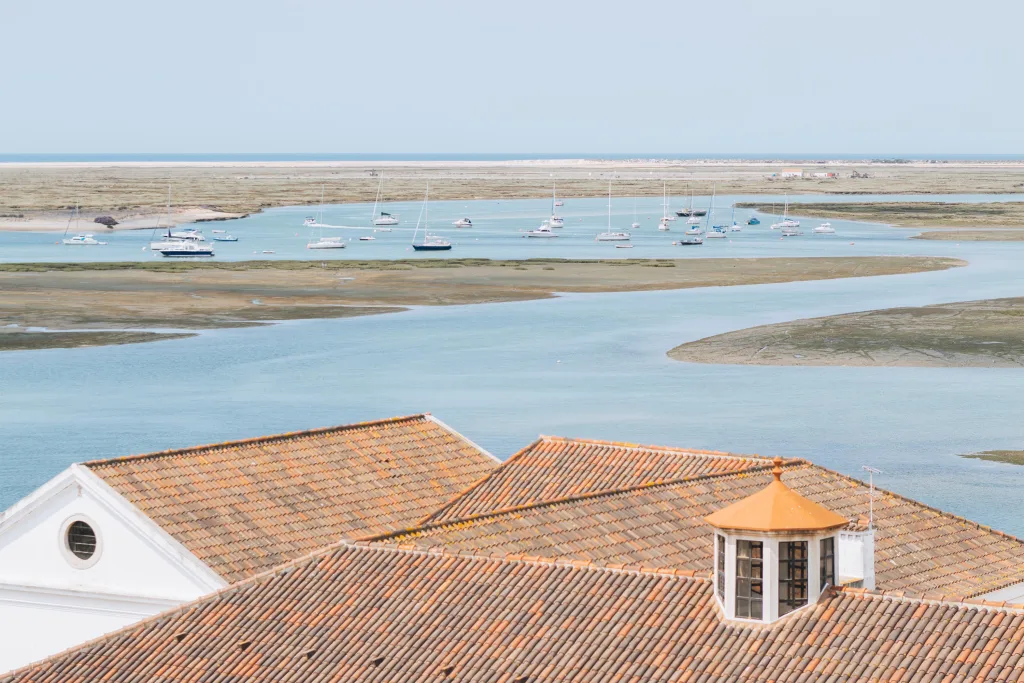
During the summer, the only bridge to the island tends to get congested. Since parking spots there are limited, arriving early in the day is key to finding a place to park. The bridge currently has just one lane in each direction (although it's undergoing modernization, so there's hope the situation will change). Until the 2023 season, cars had to wait in long queues to enter and exit the island. Off-season, everything goes back to normal. A convenient solution, of course, is cycling. Because we lived just 10 minutes from the beach, we mostly got around the area on two wheels. There are well-marked bike paths along the coast that make for a comfortable ride.
We absolutely loved the island and beaches of Faro. We took advantage of kayaking through the channels of Ria Formosa, and there are several beach options on the island. You can relax on the expansive beach with a view of the ocean. Alternatively, when the ocean winds get strong, you can set up on the Ria Formosa side. From there, you can admire the landscape of nearby hills and the dynamic panorama of Faro, with numerous planes landing and taking off alternately.

Ria FormosaIt's an extraordinary natural site. Thanks to Faro's location right along the banks of the canals and marshlands, we can observe not only exquisite bird species seeking food in the shallow waters but also crabs living in huge colonies here. That's why you'll find a massive metal crab - a symbol of the city and its surroundings - at the roundabout near the entrance to the bridge. Take a closer look at how they sociably wave... 😉
Nature around Faro - a paradise for nature lovers!
If you're curious about the salinas, which are popular places in the Algarve where salt is extracted, take a walk in the park Ludo Trail. I spent a lot of time there, taking pictures of wild birds ... and by the way of what, I wallowed in the mud, met all the mosquitoes, flies and frogs of the area. For more, read HERE 🌿
We rode our bikes there a lot, venturing along a path through the forest to the bird observatory at the Quinta do Lago. For us a great “plac zabaw”… 🙂
A beautiful place, but for those of you who love nature and silence. I highly recommend taking a walk between the salinas, where the flamingos, among others, wade, accompanied by other winged ones, and then enter the pathway 📌 Trilho São Lourenço, at which there are ruins of Roman buildings once used to extract salt....

...Here begins the border of the Algarve's 📌 Golden Triangle, the most prestigious region in both Algarve and Portugal. It's formed by the combination of several luxurious complexes. The map of the Golden Triangle encompasses some of the country's elite five-star hotels and spas, high-class golf courses, and their adjacent residential areas, along with renowned Michelin-starred restaurants.

The area mainly comprises luxurious villas and exclusive clubs for residents, predominantly English speakers who, let's be frank, mostly don't feel the need to learn Portuguese. Property prices here, to put it mildly, are absurd... Of course, the local community reacts to the inflated property prices, which only wealthy newcomers can afford, expressing their discontent through occasional protests... If I find the time, I'll write more about this disparity...
It's worth taking a tour through the neighborhoods of Quinta do Lago and Vale do Lobo. Many celebrities and world-renowned stars own properties there. It's a meticulously maintained and rather un-Portuguese slice of the Algarve...
Faro - trips and attractions
- In the City:
- Arco da Vila z XIX wieku
- Museu Municipal Arqueológico e Lapidar Infante Dom Henrique
- Igreja Matriz de S.o Pedro
- Igreja do Carmo - Inside there is an Ossuary (Capelo dos Ossos), filled with skulls and bones of monks, coming from the local cemetery
- City market – można tam znaleźć lokalne produkty, ale nie jest to zbyt urokliwe miejsce, dużo ciekawsze znajdują się w Olhao, albo niedalekim od Faro – Loule.


- Museu Regional do Algarv- regional museum
- Fado Museum
- Municipal park - recommend for parents with children, you can play miniature golf there is a playground and ... peacocks;)
- Life Sciences Center, a small science center in the heart of the port, this is not a place you must stop by, but for children certainly a very fun place to go.

- Port with city logo

- Trips from Faro:
- I recommend walking to the end of Faro Island, to Barrinha Beach, Click Here for description.
- In the port, you'll find several intriguing options: boat tours along Ria Formosa, wildlife observation excursions at sea, trips to nearby islands like Ilha Deserta (you can read about it HERE), Ilha Armona, tours to lighthouses, and visits to Ilha do Farol.

- On the island of Faro there are fishing villages on two sides. Places quite curious, but authentic

On the main page of the blog you will find on a map, marked places near the city that are worth visiting while in Faro....
Cultural life and watersports
The city hosts various festivals and cultural events that attract both locals and tourists. For instance, the Faro International Motorcycle Meeting, the Classical Music Festival, and medieval markets set against the city's defensive walls. Popular religious celebrations take place in the city center. Those staying tuned to the city's pulse will not be disappointed by theatrical, visual, musical, and sporting events, as well as festivals. Numerous workshops and gatherings also occur, and it's worth seeking out thematic groups, for example, on Facebook.
Faro is also a great spot for water sports. Surfing is especially popular, although catching a good wave can be rare. Conditions are often ideal for kiteboarding or wingfoiling, but due to oyster farms or mud from the Ria Formosa side, kiteboarding and wingfoiling are done at the beaches at the end of the Faro island.


Faro and area's good points, what you might like
I really appreciate Faro for its sense of security, bike paths, great long beaches, pleasant downtown, laid-back atmosphere, outdoor events and places ideal for wildlife watching. It offers great areas for trekking. The idea for a nice trekking CLICK HEREPerhaps we didn't fully resonate with its laid-back atmosphere, especially during winter concerning the cultural scene and limited events for children. Yet, there's ample room for new ideas and initiatives. Like I mentioned earlier, everything is evolving. Faro holds immense potential, and we'll keep visiting, observing the changes, hoping for the better...
In the meantime, we've been swept westward to the Algarve... Exploring Lagos, Costa Vicentina, and all there is to see there—writing about it as we go!
_
_
Faro Gastronomy
The gastronomy of Faro naturally revolves around seafood, fish, octopus, squid, quality beef, poultry, fresh vegetables, and fruits. You should definitely try the cataplana 👉🏻 Let me explain what that is! HERE.
Other typical dishes for the region include:
- Carapaus alimados - roasted horse mackerel
- Carne de porco com amêijoas - pork with clams
- Ervilhas com ovos à Algarvia - peas with eggs Algarve style
- Ervilhas com ovos à Algarvia - peas with eggs Algarve style
- Perdiz estufada - braised partridge
- Coelho frito - fried rabbit
- Lulas recheadas à Algarvia -stuffed squid
- Polvo no forno com entrecosto - roasted octopus with ribs
- Bifes de atum de tomatada - tuna steaks with tomatoes
- Favas à moda do Algarve - Algarve-style beans
- Canja com conquilhas - chicken soup with shellfish
- Gaspacho de alho - garlic gazpacho
If you're after a stunning view, there are several terraces on the island worth visiting, such as Bel'mare Gastrobar—an enjoyable spot offering a view of Ria Formosa, highly recommended 📌O Castelo. We've also had a great meal at 📌Old Tavern 👌🏻, delightful cuisine. 📌A Venda 👌🏻 is a tasty spot with plenty of vegetarian options. For a meaty experience, try 📌Sabores do Churrasco Premium. At 📌Restaurante Al-Ria, I'd recommend trying the cataplana 👌🏻. You'll find places like 📌Raizes, 📌Faaron Steakhouse, and 📌Monky quite enjoyable too. In the downtown area, there's a variety of eateries representing different cuisines worldwide, but watch out for tourist traps—like in any touristy place.
Official website : Link
Getting to Faro
✈️ By plane
🚆 From Faro you can travel by train to Lisbon, Lagos and other destinations in the Algarve. Check train departure times 👇🏻:
🚐 The campground is located on the island of Faro and requires crossing the bridge marked with a sign prohibiting campers 🚐. We often saw cars turning around in front of the bridge, but the campground runs at this location. LINK.
📌 Map of what to see in Faro:
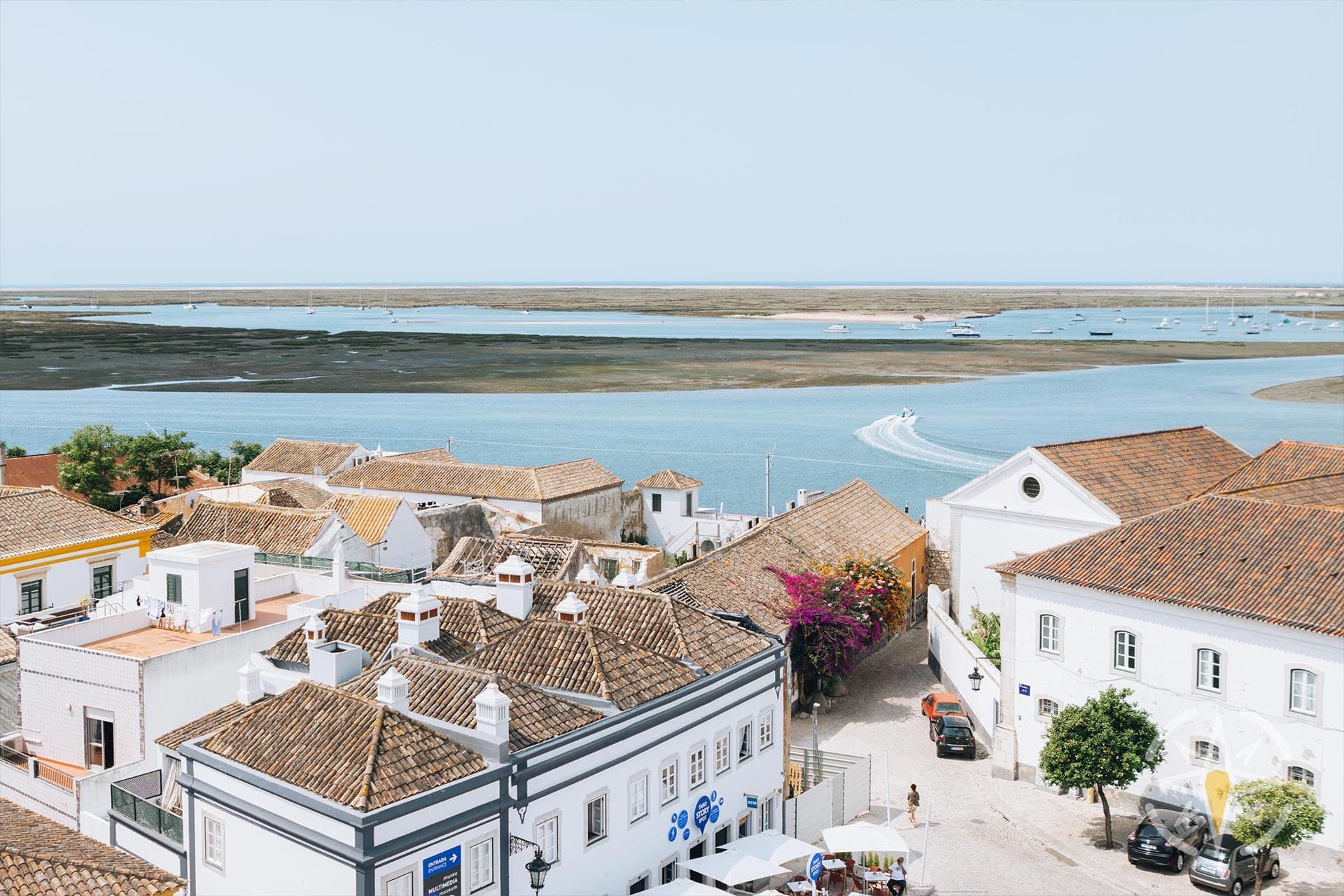

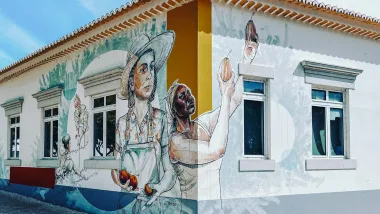



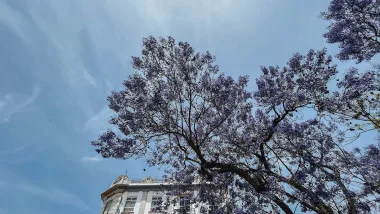
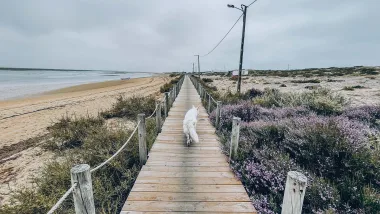















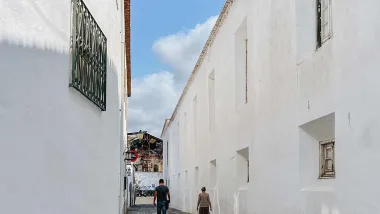






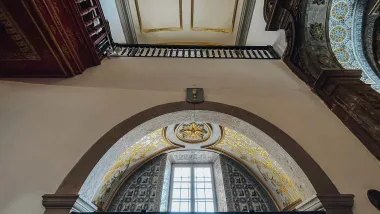


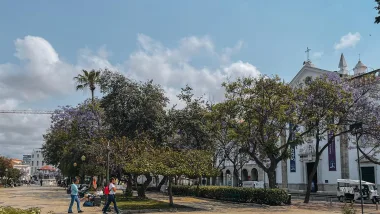











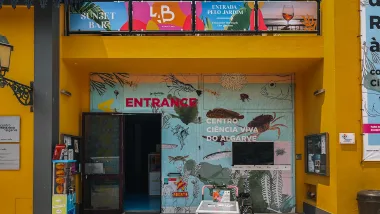

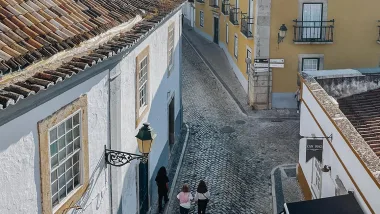


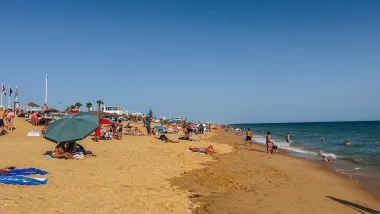

















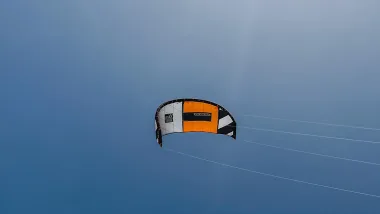





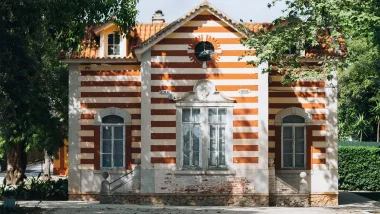






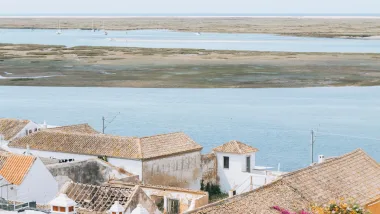


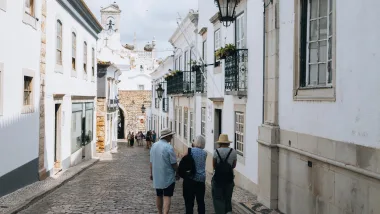
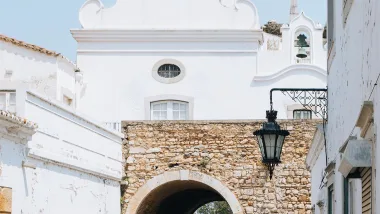


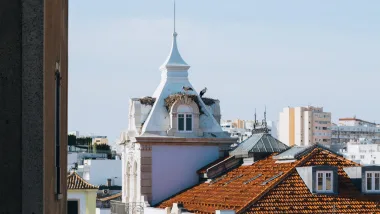



















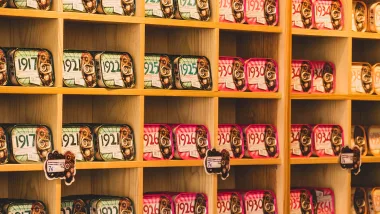




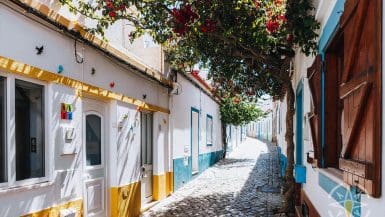




Leave a comment, ask a question...